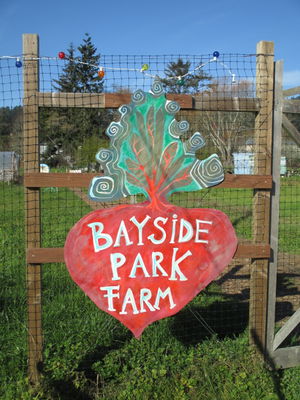| Line 14: | Line 14: | ||
=====Vermicomposting of Vegetable Waste===== | =====Vermicomposting of Vegetable Waste===== | ||
In Bhide’s book - Vermicomposting of Vegetable Waste -, three worms species (Pheretima posthuma, Eisenia sp., and Perionyx excavatus) were able to biodegrade vegetable wastes. Considering, also, parameters that include “substrate moisture, temperature, and oxygen requirements. Results indicated that all three earthworm species survived in soil containing all moisture levels, but none of the species survived in undecomposed wastes. E. foetida and P. excavatus survived at 20, 30, and 35 degree C. Best moisture conditions ranged from 20-80%. Substrates with less than 20% fermentable organic substances could be used directly in vermicomposting. The most appropriate earthworm species for vermicomposting was found to be P. excavatus.”. | |||
=====Vermicompostig of Food Waste===== | =====Vermicompostig of Food Waste===== | ||
Revision as of 01:46, 9 February 2015
Background

This is an Engineering 305 class - Appropriate Technology - that is going to work on a vermicomposting project, also known as worm composting, at Bayside Park Farm, Arcata, CA. The group, which will work on this project during the 2015 spring semester, aims to contribute to recover the previous project that is no longer in use. When the group went to the Bayside Park Farm, they found the outdoor composter obsolete due to lack of maintenance; however, it was in usable condition.
Problem statement
The objective of this project is to recover the already existent outdoor composting box in order to fulfill the needs of the farm. The group was informed that the farm requires 15 gallons of compost, monthly, thus the group intend to supply that need.
Literature Review
Historical overview of vermicomposting
Vermicomposting vs. Composting
Vermicomposting of Vegetable Waste
In Bhide’s book - Vermicomposting of Vegetable Waste -, three worms species (Pheretima posthuma, Eisenia sp., and Perionyx excavatus) were able to biodegrade vegetable wastes. Considering, also, parameters that include “substrate moisture, temperature, and oxygen requirements. Results indicated that all three earthworm species survived in soil containing all moisture levels, but none of the species survived in undecomposed wastes. E. foetida and P. excavatus survived at 20, 30, and 35 degree C. Best moisture conditions ranged from 20-80%. Substrates with less than 20% fermentable organic substances could be used directly in vermicomposting. The most appropriate earthworm species for vermicomposting was found to be P. excavatus.”.
Vermicompostig of Food Waste
Criteria
The following criteria will be used to measure and orientate this project. The eligibility criteria were chosen based on the suggestions of the students who are working on the project, as well as the requirements of the main farmer and needs of Bayside Park Farm. The scale (1-10) represents the importance level of meeting the constraint of each listed criteria.
| Criteria | Constraints | Weight (1-10) |
|---|---|---|
| Maintainability | Must be easy to remove the compost from the box, no more than 2 workers. | |
| Aesthetics | Must look clean. | |
| Educational Aspect | Must include an easy manual describing the process in order to help the workers how to use it. | |
| Mobility | Must be projected in order to be easy to move around. | |
| Usability | Must sufficiently produce 15 gallons of compost monthly. | |
| Cost | Must not exceed budget | |
| Functionality | Successfully compost with worms. |
References
- ↑ I heard this on the quad. -Abraham Lincoln